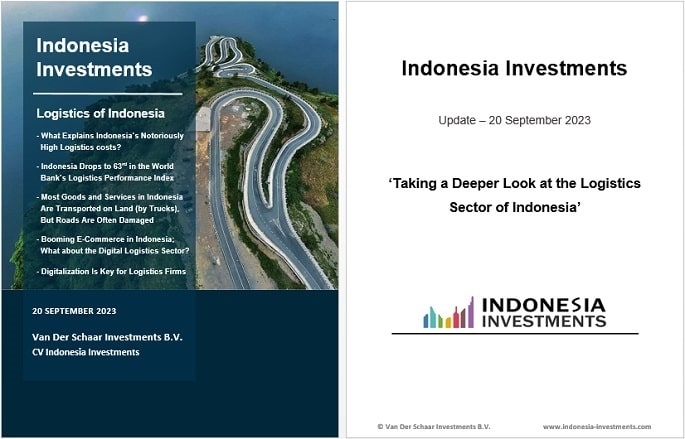Waspadalah terhadap penipu yang aktif di WA mengatasnamakan Indonesia Investments
15 April 2025 (closed)
Jakarta Composite Index (6,441.68) +73.17 +1.15%
Logistics Sector of Indonesia; Dropping in the World Bank’s Performance Index
It has been a while since we last covered Indonesia’s logistics sector, and so it is time for a new analysis on this topic. This is particularly relevant because the World Bank recently released a new Logistics Performance Index report (July 2023).
Typically, this Washington-based institution released a global logistics report every two years. However, after the publication of the 2018 edition it would take five years to finally issue a new one.
The hiatus could certainly be related to the sudden arrival of the COVID-19 crisis in 2020-2021 that seriously disrupted the logistics sector around the world. However, the hiatus was also the consequence of the introduction of a new set of performance indicators. Whereas previous editions of the World Bank’s Logistics Performance Index (LPI) relied exclusively on a survey of logistics professionals, the new edition uses indicators that are derived from a big data approach, namely on the movement of maritime shipping containers, air freight, and postal parcels (by trade lane and gateway). These indicators complement the traditional survey-based LPI, on which the LPI scores and ranks are still based. The traditional LPI scores are still based on the following six components:
- The efficiency of customs and border management clearance;
- The quality of trade- and transport-related infrastructure;
- The ease of arranging competitively priced international shipments;
- The competence and quality of logistics services;
- The ability to track and trace consignments;
- The frequency with which shipments reach consignees within the scheduled or expected delivery time.
Over the past decade, high-income countries have occupied the top positions in the LPI ranking. The top scorers are concentrated in Europe, but East Asia and Pacific, North America, the Middle East, and North Africa are also represented in the top. These economies have traditionally dominated international supply chain networks, and the composition of the group has been steady over time. The recent supply chain crisis has not significantly changed this relative pattern of results across countries because the crisis was global in scope, hence affected all countries (roughly equally).
By contrast, the bottom 10 scorers are mostly low-income and lower-middle-income countries. These are fragile economies, typically affected by armed conflicts, natural disasters, political unrest, or, face challenges of geography, such as being landlocked, or diseconomies of scale in connecting to global supply chains, where countries are too small to be connected widely.
[...]
This the introduction of the article. The article (which consists of 28 pages) can be ordered by sending a message to our email or WhatsApp accounts:
• info@indonesia-investments.com
• +62.882.9875.1125 (including WhatsApp)
• +62.812.9244.2445 (including WhatsApp)
Price of this report:
Rp 30,000
Take a glance inside the report here!

Bahas
Silakan login atau berlangganan untuk mengomentari kolom ini
